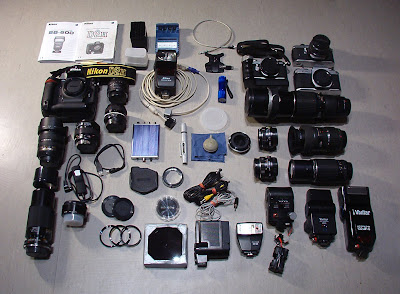Although the basics of photography date back as far as the ancient Romans, history of cameras began in the seventeenth century. The history of photography revolves around innovative attempt to reproduce images, if the attempts have succeeded or photographic impasses.
Camera Obscura
The early history of photography can be traced back to a device known as the camera obscura. A camera obscura is either in a dark room or box with a pinhole at one end. With a fairly small hole, an inverted image of what the face is enlarged the hole on the opposite wall of the camera obscura.
The ability of the camera obscura to reproduce images became the basis for camera lenses as technology advanced photography. With the advent of the camera obscura, the combination of light and chemical treatment has also entered the field of photography. At this stage, the history of modern photography and the cameras began.

A brief history of cameras
French Inventor Niepce produced the first permanent image in the history of photography. Niepce used a camera obscura and coated with photosensitive chemicals. The exposure time needed to seize this historic first image was astounding eight hours.
Daguerreotype Cameras and Calotype
In 1829, Niepce in partnership with Louis Daguerre. After the death of Niepce in 1833, Daguerre continued the research he and Niepce began. With its continuous efforts, Daguerre was able to reduce the exposure time in half an hour. He also discovered that the images by immersing them in salt water might make the image permanent. Daguerre was appointed its Re-invention of the camera obscura and the daguerreotype sold the rights to the French government in 1839.
"Daguerreomania" has exploded in Europe and the United States, where the permanent images on glass and metal became popular. However, while for reproducing images with the daguerreotype was popular, this new model could make a single image, not multiple copies.
Even as daguerreotypes became popular, the next step in the history of cameras was already underway. In 1835, Englishman William Henry Fox Talbot created the first paper negative. Nine years later, in 1844, Talbot patented the calotype. Although the daguerreotype produced images of better quality than the calotype, Talbot's invention could produce multiple copies from a single voice against it.
Talbot is also credited with publishing the first collection of photographs in the history of photography. In 1844 he published a book of photographs entitled The Pencil of Nature.
The next step in the history of photography
Because the exposure time for both the daguerreotype and Calotype were long, faster exposure times as the next step in the history of cameras. This became a reality with photographs Collodion Frederick Scott Archer in 1851. The collodion process shorter exposure to only three seconds.
To reduce exposure time, Collodion images were processed while the photographic plate is still wet. Consequently, large quantities of developing equipment should be available on site. Dry processing plate was not available before 1871.
Between 1851 and 1871, a number of events in the history of photography:
1861: James Clerk Maxwell created the first system of color photography, using photographs in black and white with red filters, green and blue.
1861 to 1865: Mathew Brady and his staff cover photograph the Civil War.
1877: Edward Muybridge photos of a galloping horse show that during the gallop of a horse, four hooves leave the ground at once. Changes lot of money in the hands of San Francisco rich who had bet on the outcome.
Dry Plates and Boxes
In 1871, Richard Maddox discovered gelatin can be used instead of glass photographic plates. This step has not only helped accelerate the development, but also paved the way for mass production of the film.
George Eastman took over the process and introduced flexible film in 1884. In 1888, Eastman introduced the box camera, the first product in the history of cameras available to the general public.
Since the late nineteenth century, photographic technology has evolved at a rapid pace. Here are some milestones in photography in the 20th century:
1907: The first commercial color film is developed.
1936: Kodachrome color film multi-layers, is developed.
1937: Photojournalism is an important part of WWII news reports.
The future of the photo
The history of cameras and photography is underway with new innovations appear regularly. With the digital camera, and amateur photographers can now take multiple pictures and view them almost instantaneously. Even the underwater cameras are now affordable solutions for the general public.
Innovation and necessity have pushed the history of photography and cameras. With extensive knowledge of photographic techniques available today, other innovations are expected in the future.









